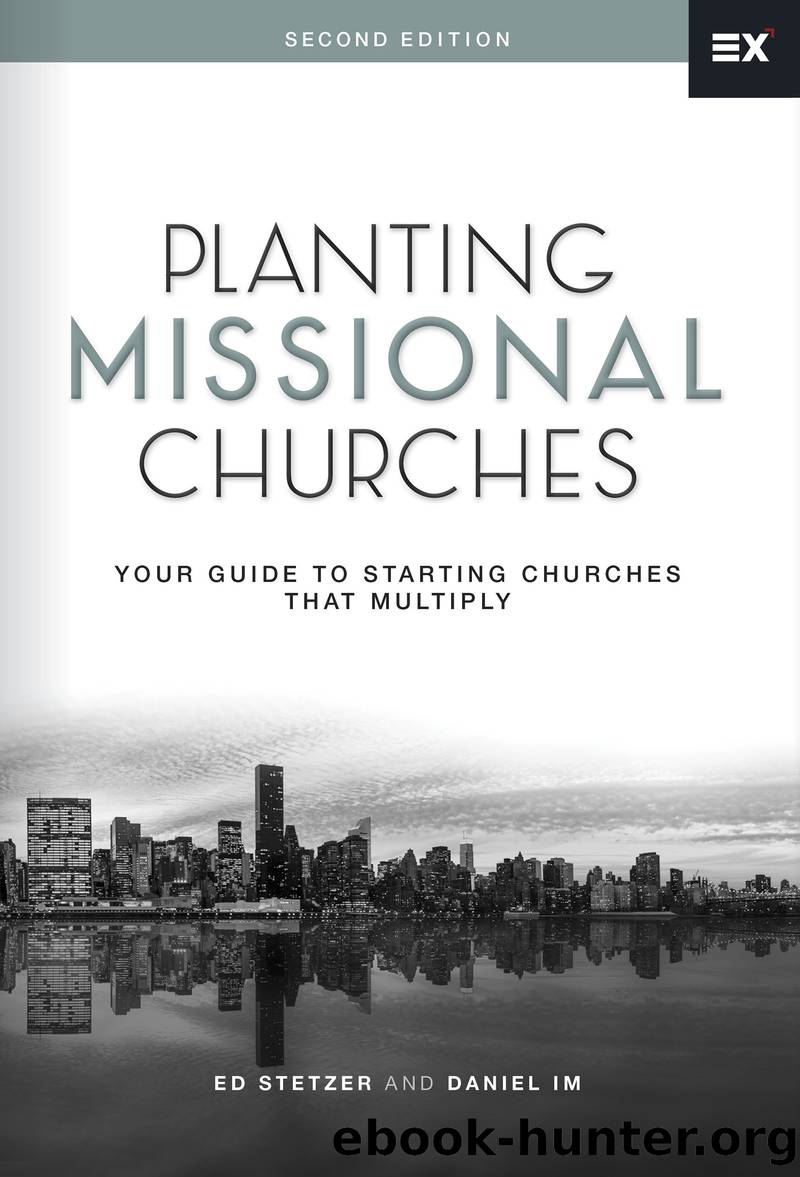Planting Missional Churches by Stetzer Ed;Im Daniel; & Daniel Im

Author:Stetzer, Ed;Im, Daniel; & Daniel Im
Language: eng
Format: epub
Tags: Religion/Christian Church/Growth
Publisher: B&H Publishing Group
Published: 2016-05-02T00:00:00+00:00
Outside of small groups and/or discipleship classes, connection points can range from having a designated area where people can come after the service to receiving a gift and meeting some leaders from the church, to hosting a board game night at the church with free babysitting. Connection points can also include a short-term small group class designed to teach them about the mission and vision of the church as well as a guest reception for them to meet the pastor and other leaders.
Connection cards and connection points are tools by which the new church can build bridges of connection with people.
Developing a Follow-Up Process
After several months of launch-team development, advertising, building relationships, and hard work, the big day (launch day) comes and goes. The day after the congregationâs first service is likely to be a day of rejoicing. Most consider their launch day a success when they meet their attendance goal. While we are proponents of celebrating successes, the coming and going of launch day means the work really has just begun. Most church planters struggle with what steps to take in the days that follow the first service.
No one can fault the planter for being preoccupied with the launch day. The importance of that day cannot be overstated, but it must not prevent planning and preparing for follow-up. According to church-growth expert Gary McIntosh, churches that are able to get guests to return the following week have an 85 percent chance of keeping them.1 I canât stress enough the importance of having a follow-up process from day one.
When thinking about developing a follow-up process, you want to answer the following questions:
1. What do you want the follow-up to communicate? In other words, why do you want to follow up with guests? A successful follow-up process will accomplish a few things. First, it will communicate that your church values people. Second, it will thank them for being your guest. Third, it will provide some introductory information about your church. Fourth, it will point them to a next step. The ultimate goal of follow-up is connection; if you donât point them to a possible next step, you are not pointing them to connect with your church.
2. How do you want to follow up with guests? Do you want to give them a gift? Do you want to call them? E-mail them? Text them? Write them? Send them a letter or postcard? Or all of the above? Do you want to follow up with adults only? Or do you want, in some way, to follow up with the teens and children that attend?
3. How are you going to gather information on people so that you can follow up? Following up with people is impossible when you donât have any information. There are at least two ways to gather information on guests during a service. First, you can use a connection card, which I have described above. Second, you can use the childrenâs ministry. If you have a childrenâs ministry program during the service, you can use the childrenâs registration as a means to follow up with the family.
Download
This site does not store any files on its server. We only index and link to content provided by other sites. Please contact the content providers to delete copyright contents if any and email us, we'll remove relevant links or contents immediately.
Joan of Arc by Mary Gordon(3271)
Victory over the Darkness by Neil T. Anderson(2390)
The Gnostic Gospels by Pagels Elaine(2034)
Devil, The by Almond Philip C(1906)
The Nativity by Geza Vermes(1853)
The Psychedelic Gospels: The Secret History of Hallucinogens in Christianity by Jerry B. Brown(1829)
Going Clear by Lawrence Wright(1575)
Going Clear: Scientology, Hollywood, and the Prison of Belief by Lawrence Wright(1574)
Barking to the Choir by Gregory Boyle(1509)
A TIME TO KEEP SILENCE by Patrick Leigh Fermor(1501)
Old Testament History by John H. Sailhamer(1499)
Augustine: Conversions to Confessions by Robin Lane Fox(1475)
A History of the Franks by Gregory of Tours(1402)
The Knights Templar by Sean Martin(1399)
A Prophet with Honor by William C. Martin(1376)
The Bible Doesn't Say That by Dr. Joel M. Hoffman(1374)
by Christianity & Islam(1351)
The Amish by Steven M. Nolt(1254)
The Time Traveler's Guide to Medieval England by Ian Mortimer(1219)
